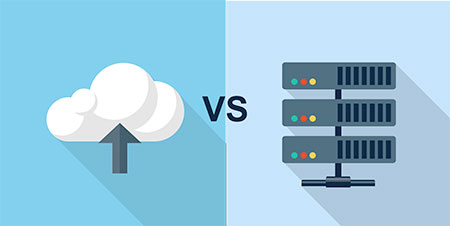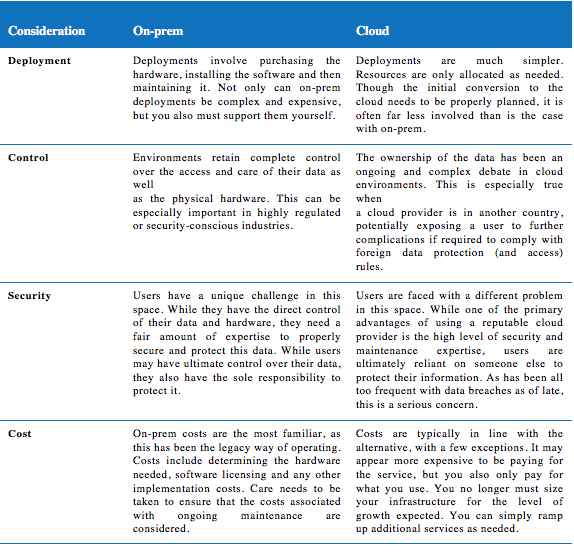Should I Move to the Cloud? Understanding the Business Case

DIGITAL MANAGEMENT
One of the most important trends affecting both small
and large organizations alike is the availability of
a cloud infrastructure. Even as new applications
and functionalities are being marketed, it is now
commonplace to see references to such increasingly
popular terms as “cloud-based,” “hosted” or “onpremise”
(on-prem). It can be extremely overwhelming
to digest the various systems and the different ways in
which they operate. However, understanding the primary
factors to consider for each of the available choices can help you decide on the best route to take.
What is ‘the cloud’
Cloud computing is the sleek marketing term for accessing your resources from remote servers that are
hosted by third parties, relieving you of the responsibility of maintaining the servers at your own location. This relatively recent capability has only now become an option due to the major advancements in network and communication technology. In the past, the servers hosting key software needed to be physically located close to the end users, as there was extreme performance degradation over even short distances.
In addition to the communication and network advancements, hosting companies are now able to effectively create virtual environments for their clients. These virtual areas mimic a physical server environment where the client’s software is deployed and then accessed remotely. The virtual environments are already configured, so rapid deployment or expansion are significantly improved over traditional methods. There are no capital expenditures, data backup processes are easily configured, and organizations only pay for the resources that they use.
Cloud environments also come in a variety of flavours. There are private clouds, public clouds and even hybrid cloud solutions available. When evaluating a cloud solution, take the time to understand:
- the level of autonomy your organization will have in the cloud
- any imposed restrictions to changes
- data ownership caveats
- any special licensing requirements
Is on-prem dead?
The physical internal hosting of an organization’s applications has long since been the cornerstone architecture in place. Data security, proprietary software and complete ownership are undeniably maintained. Ultimate security and control still come with physical ownership and maintenance of the hardware. In fact, many industries have specific requirements for the governance of their data and software that stipulate physical control.
The on-prem architecture does have its challenges. Physically hosting your own servers and applications means you must also provide the necessary administrative components. Licensing, data growth strategies, security, hardware maintenance, monitoring and support are all necessary items that need to be planned and costed. Ultimately, all these items require specific (and often costly) IT resources.
On-prem vs. the cloud
As previously mentioned, there are several considerations when deciding what path to take. The following table outlines the key differences between on-prem and cloud environments that can greatly affect your organization.

A note on Software as a Service
With the evolution of computing environments that can now realistically support accessing resources
remotely, Software as a Service (SaaS) has also quickly become available. SaaS mainly follows the same
pattern as on-prem and the cloud. However, rather than having to buy and license your own software (for
large upfront costs), you can basically lease the applications for a monthly fee. Not only does this reduce the upfront investment, but it also typically gives users immediate access to the latest software versions.
Disclaimer
The information provided on this page is intended to provide general information. The information does not take into account your personal situation and is not intended to be used without consultation from accounting and financial professionals. Allan Madan and Madan Chartered Accountant will not be held liable for any problems that arise from the usage of the information provided on this page.


SOCIAL CONNECT